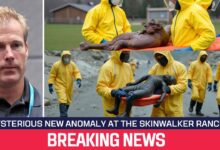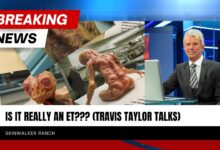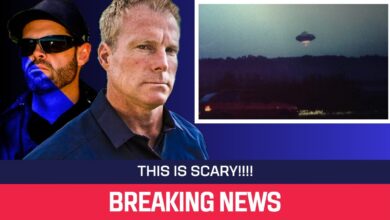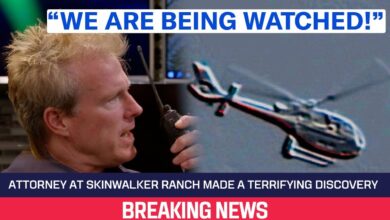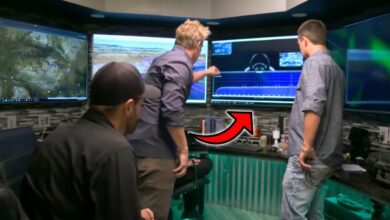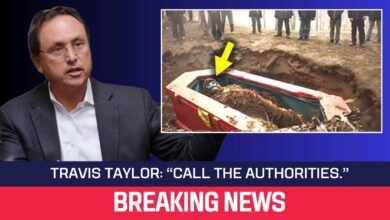Travis Taylor Is Not Who You Think He Is
Travis Taylor Is Not Who You Think He Is

The Rocket Scientist’s Odyssey, the Travis Taylor story.
From the red clay fields of northern Alabama to the high strangeness mesa of Skinwalker Ranch, Travis Shane Taylor’s journey reads like a science fiction novel come to life.
Driven by insatiable curiosity, a family legacy of aerospace innovation, and a flare for combining hard science with popular entertainment, Taylor has carved a unique path as an engineer, government scientist, author, and television personality.
Roots in Rocketry
Born on July 24th, 1968 in Decar, Alabama, Travis was raised in the shadow of Huntsville’s burgeoning space industry.
His father, Charles Taylor, labored as a machinist at Wild Laboratories, contributing to early NASA satellite projects.
Young Travis devoured science fiction, dismantled household electronics, and dreamed of the stars.
At 17, armed with the neighbor’s guidance and his own determination, he built a functional radio telescope that won Alabama’s state science fair.
That triumph earned him a direct job offer and scholarship from the US Army’s Redstone Arsenal to work on directed energy weapon systems immediately after high school.
Forging an Academic Arsenal
Travis Taylor’s academic journey reflects an uncommonly broad and deep mastery of both theoretical and applied sciences. Each successive degree layering new expertise that would prove essential in his later roles.
Following his Bachelor of Science in Electrical Engineering from Auburn University in 1991, Taylor already possessed a solid grounding in circuit theory, signal processing, and systems design.
This foundation enabled him to tackle complex instrumentation and sensor systems in later projects.
In 1994, he earned an MS in Physics from the University of Alabama, Huntsville.
His coursework in quantum mechanics, statistical physics, and electromagnetic theory sharpened his ability to model high-energy phenomena — skills he would soon apply to both directed energy weapons and the analysis of unexplained aerial phenomena.
By 1999, Taylor had completed a PhD in Optical Science and Engineering. His dissertation work on laser-matter interactions and beam propagation through turbulent media provided the technical rigor behind his later development of space-based beamed energy systems and high-energy laser research.
Not content with a single doctoral degree, Taylor added an MSE in Mechanical and Aerospace Engineering in 2001.
This multidisciplinary program immersed him in fluid dynamics, structural analysis, and propulsion system design, preparing him for contributions to next-generation launch vehicles and very large space telescope architectures.
Expanding his horizons internationally, he then earned an MS in Astronomy from the University of Western Sydney in 2004.
There he studied celestial mechanics, observational techniques, and instrument calibration — expertise that would inform both his space telescope concepts and his rigorous data collection methods when investigating anomalies at Skinwalker Ranch.
Finally, in 2012, Taylor completed a second PhD in Aerospace Engineering, synthesizing all prior fields into advanced research on hypersonic propulsion, spacecraft systems engineering, and planetary defense strategies.
This cumulative academic arsenal equipped him to lead classified Department of Defense programs, advise NASA on future exploration concepts, and bring a uniquely credible scientific lens to the mysteries of UAP investigation.
Each degree not only built upon the last, but also charted new territory, transforming Taylor from a talented engineer into a polymath capable of tackling the most challenging questions at the intersection of science and the unknown.
From Labs to Classified Projects
Dr. Travis Taylor’s two-decade tenure on US Department of Defense and NASA contracts forged him into one of America’s foremost experts at the cutting edge of aerospace innovation — and uniquely qualified to interrogate unexplained phenomena.
From the moment he joined Redstone Arsenal as a freshly minted electrical engineer in 1990, Taylor was immersed in advanced propulsion concepts.
He contributed to early studies of pulse detonation engine systems that promised to deliver dramatic improvements in thrust and efficiency by detonating fuel-air mixtures in rapid succession.
His work on pulse detonation cycles and their materials challenges laid the groundwork for later hypersonic research.
Simultaneously, Taylor led design teams exploring very large space telescopes.
Tasked with envisioning aperture spans far beyond the Hubble class, he modeled inflatable mirror architectures and deployable truss systems that could unfold into kilometer-scale observatories.
These concepts anticipated the era of mega telescopes capable of imaging Earth-like exoplanets directly.
In parallel, his PhD research in optical science dovetailed with Pentagon interests in space-based beamed energy systems.
Taylor devised laser arrays orbiting at geosynchronous altitudes — projects intended to focus coherent light on targets from hundreds of miles away.
He optimized beam-combining techniques and adaptive optics to compensate for atmospheric distortion, advancing ideas for both orbital debris mitigation and directed energy defense.
Back on the ground, Taylor’s mastery of high-energy photonics led to breakthroughs in high-energy laser development.
He collaborated on designs for mobile megawatt-class solid-state lasers, coordinating laser cavity engineering, thermal management systems, and precision beam steering.
His analyses of beam propagation through battlefield atmospheres informed early prototypes of laser-based missile defenses.
Recognizing that propulsion and photonics alone could not secure US technological primacy, Taylor expanded his portfolio to next-generation launch systems.
He evaluated hybrid rocket-ramjet configurations, conceptualized reusable first-stage vehicles, and integrated lightweight composite structures for rapid turnaround operations — a prescient nod toward the commercial launcher revolution.
Taylor’s dual engineering prowess and security clearances led him into intelligence disciplines.
He mastered human tradecraft to interpret first-hand witness accounts of anomalous events, analyzed multispectral imagery (IMINT) to detect unexplained objects, deciphered electronic emissions (SIGINT) potentially emanating from non-terrestrial craft, and applied measurement and signatures intelligence (MASINT) to characterize radiation spikes, electromagnetic anomalies, and exotic material residues.
By 2018, after nearly 30 years of classified work, these combined skills culminated in his appointment as Chief Scientist for the Pentagon’s Unidentified Aerial Phenomena Task Force (UAPTF).
In that capacity, Taylor oversaw multidisciplinary teams analyzing sensor data from aviation, satellite, and ground-based platforms.
He established protocols for correlating human sighting reports with mass spectrographic readings and SIGINT frequency scans — refining the government’s ability to adjudicate UAP cases scientifically.
Transitioning to industry, Taylor joined Radiance Technologies as Principal Research Scientist.
There he guided classified projects for DARPA and the Missile Defense Agency, advising on modular directed energy payloads, next-generation sensor fusion techniques, and hypersonic test vehicles.
His Radiance tenure solidified his reputation as the go-to expert on anything that flew faster than sound, beamed light farther than optics textbooks, or defied straightforward explanation.
Storytelling Through Science Fiction
Challenged by his wife to write beyond academic papers, Taylor published his first novel, Warp Speed, in 2004.
Inspired by Robert Heinlein’s hard science fiction, he authored 14 novels by 2020, blending rigorous technical detail with thrilling narratives of space exploration and alien contact.
From Rednecks to Ranch Mysteries
Taylor’s television debut on History Channel staples like The Universe (2009–2010) and Life After People (2010) set the stage.
In 2011, National Geographic Channel cast him as the star of Rocket City Rednecks, showcasing hillbilly ingenuity in backyard rocket science experiments.
The series ran two seasons and cemented his on-screen persona.
His stature as a TV scientist grew with stints on Three Scientists Walk into a Bar (2015), Ancient Aliens (2017–2021), The Tesla Files (2018), and The Curse of Oak Island (2014–present).
Yet nothing prepared him for the enigma of Skinwalker Ranch.
Unraveling High Strangeness
In 2020, History Channel launched The Secret of Skinwalker Ranch, featuring Taylor alongside other investigators at the infamous 512-acre site.
Armed with spectrum analyzers, high-speed cameras, and an unyielding scientific method, he documented radiation spikes, GPS anomalies, and unidentified aerial phenomena that defied conventional explanation.
Taylor’s willingness to confront the unknown, combined with his government clearance and academic pedigree, brought rare credibility to the investigations.
Whether probing for interdimensional portals or hidden research programs, he remained resolute:
“If there’s something going on here, we’re going to find out what it is or die trying.”
A Life Beyond the Lab
Travis Taylor’s personal life is rooted in Somerville, Alabama, where he lives with his wife and two children.
Off camera, he continues publishing technical papers, authoring both fiction and non-fiction works, including textbooks on rocket science and planetary defense.
His story is a testament to the power of relentless curiosity, multidisciplinary expertise, and the courage to pursue mysteries at the frontiers of science.
From backyard telescopes to Pentagon task forces — in the velvet skies above Skinwalker Ranch — Travis S. Taylor stands as a modern Renaissance scientist, bridging the often divided worlds of rigorous research and imaginative exploration.

